Promotional marketing is a crucial tool for unlocking revenue, building brand presence, and strengthening your company’s position.
To succeed in today’s competitive marketing, you need more than designing the perfect product or service for your target audience.
With the right promotional marketing strategy, you can highlight the unique benefits of your product or service, differentiate your business from competing companies, and pave the way to consistent growth.
What is Promotional Marketing? An Introduction
Promotional marketing is a specific type of marketing campaign designed to draw attention to a brand and its products and services.
The overall goal is to increase brand awareness, generate sales, and inspire customers to interact with your company.
As one of the “4 Ps of the marketing mix”, Promotional marketing is a core component of the strategies companies use to place their product in front of their target audience.
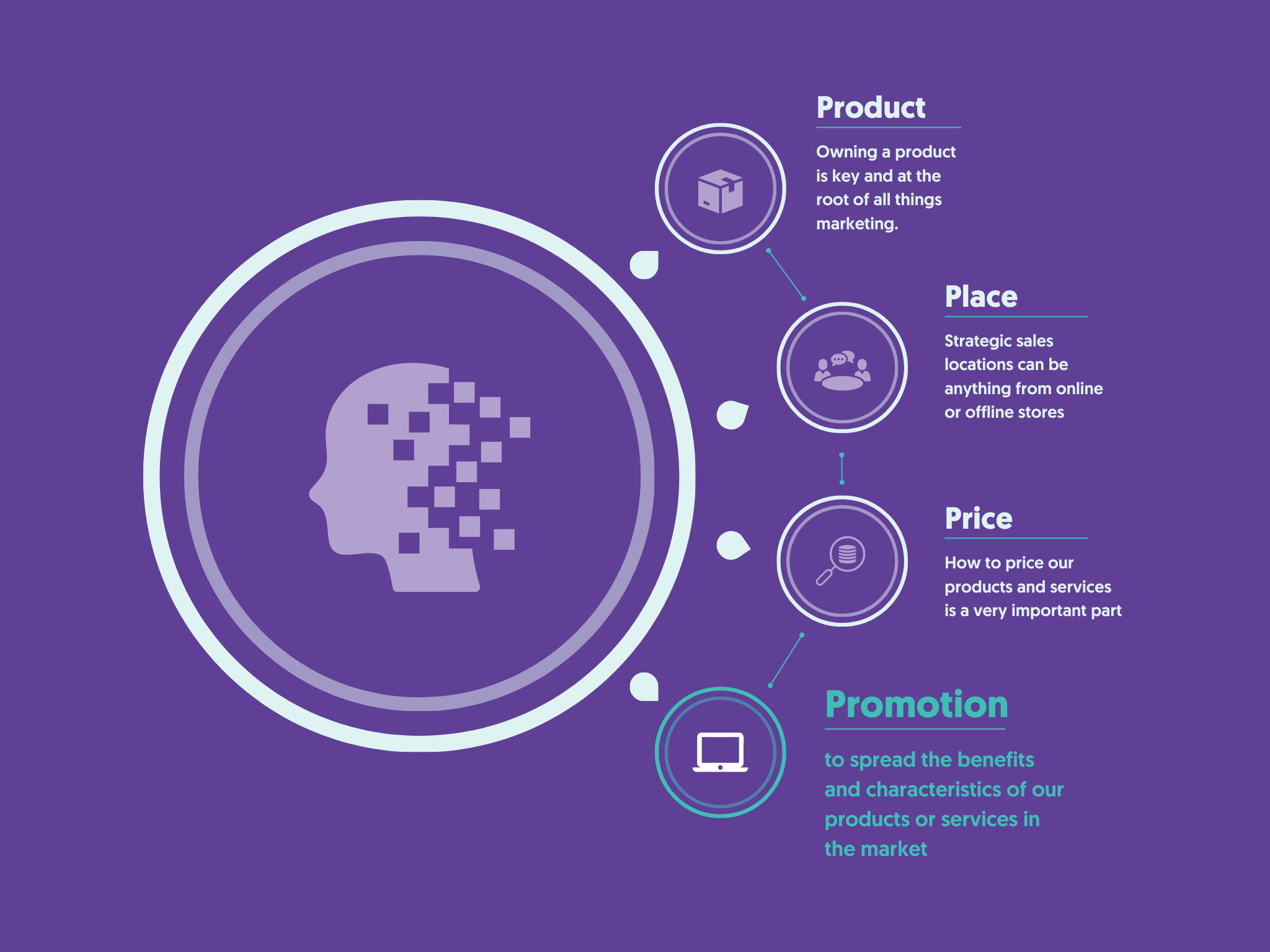
Through multiple channels and campaigns, you’ll use promotional marketing to highlight the unique values of your products, drive leads, inform and educate your audience, and strengthen your brand.
Marketing vs. Promotion: What’s the difference?
One of the things that can make promotional marketing difficult to understand for beginners is the overlap between the terms “marketing” and promotion”.
Both marketing and promotion involve raising brand awareness and connecting with customers, but there are some differences between the two concepts.
Marketing is the process of bringing products to customers in an engaging way.
It involves finding the needs of your consumers, analyzing your competition, and distributing your products effectively.
While marketing encompasses the entire marketing mix, promotion is just one component.
Promotional marketing focuses on the strategies and techniques used to communicate the benefits and features of your products to your audience.
The goal of promotional marketing is to generate demand, present your product, and differentiate it from other solutions in the market.
Benefits of Promotional Marketing
Effective promotional marketing benefits a business in several different ways.
It allows companies to introduce new products and services to their chosen audience, develop positive brand equity, and inform buyers about solutions to their problems.
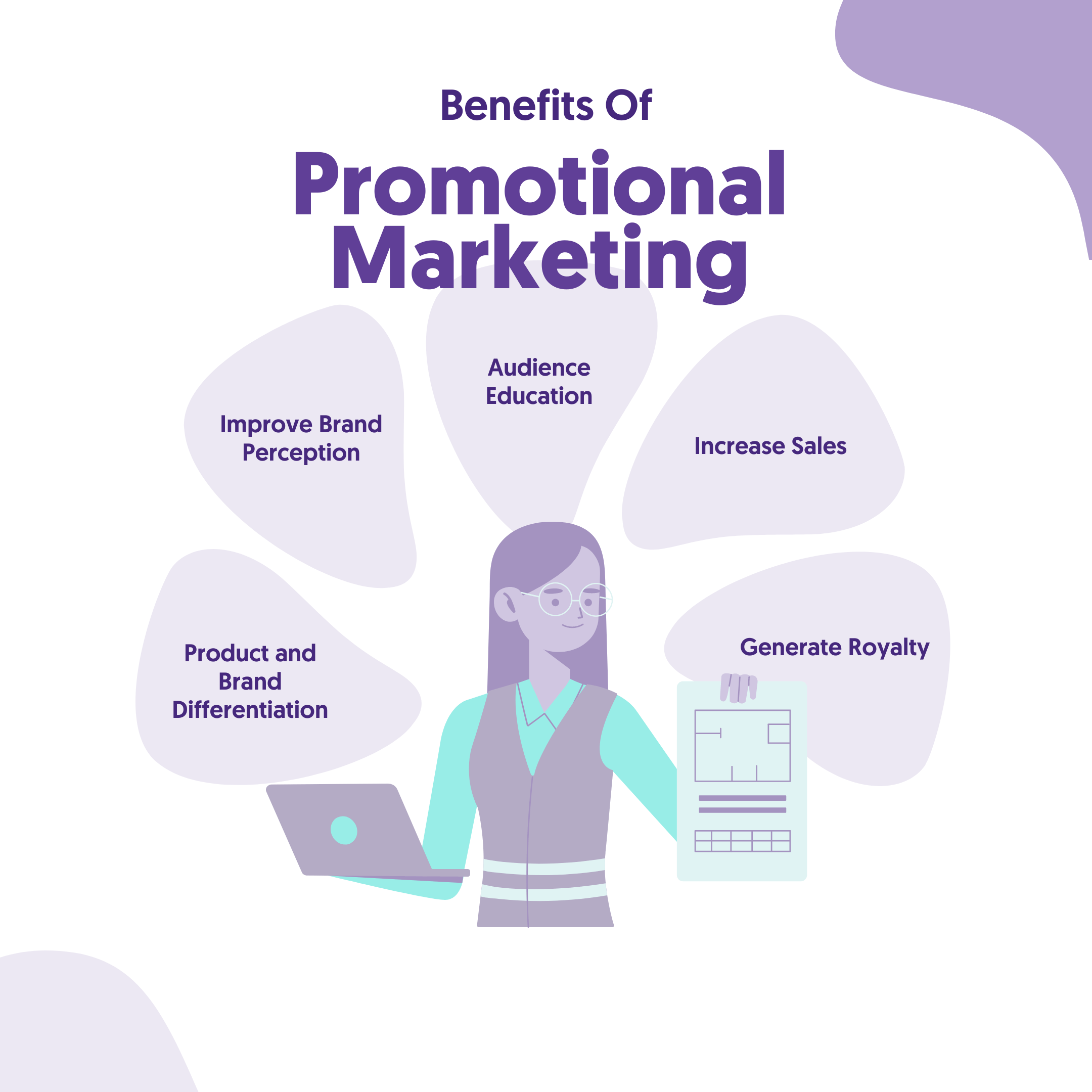
While the exact outcomes of your promotional marketing efforts will vary depending on the strategies and methodologies you use, core benefits include the following:
Differentiation: Promotional marketing helps companies highlight their unique selling proposition or the core values of the products and services they offer.
This helps to differentiate your company from competing brands and gives you a stronger position in your chosen marketplace.
Improve brand perception: A good promotional marketing strategy is one of the core tools you’ll use to develop your brand.
It enhances brand awareness and recognition, highlighting the core components of your business identity and strengthening brand equity, making your company more appealing to investors.
Educating your audience: With promotional marketing, you’ll introduce your products to your audience, keep them informed about the evolution of your brand, and provide useful insights into what you can offer.
This helps to inspire potential customers to act and improves your chances of earning sales.
Increased sales: As mentioned above, promotional marketing gives customers the information they need to make intelligent purchasing decisions.
It also actively drives your customers towards a purchase, increasing your chances of conversions.
Generate loyalty: While promotional marketing primarily focuses on generating demand and creating initial sales, it can also help improve brand loyalty.
The methods you use to promote your products and the experiences you give your target audience could help to transform your one-time buyers into long-term advocates of your brand.
Promotional Marketing Techniques
Promotional marketing is a relatively broad term that encompasses a host of different advertising strategies.
Most companies, particularly newer entries into the market, will experiment with various techniques to determine what works best for their organization.
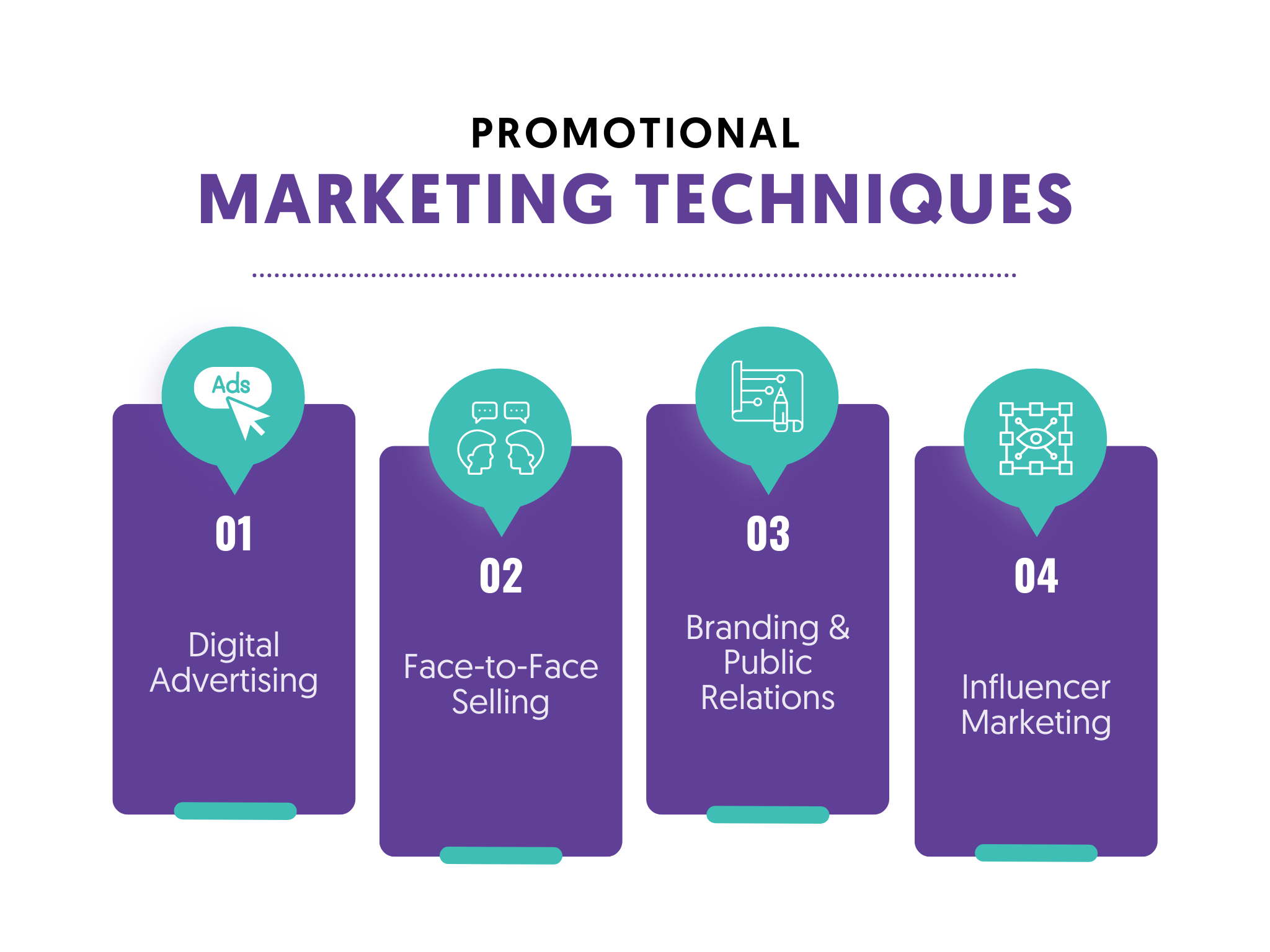
The most common promotional marketing techniques used today include:
1. Digital Advertising
Digital advertising, or digital marketing, is the art of effectively showcasing your products and services through various online channels.
There are numerous types of digital marketing campaigns companies can explore today.
One of the most common strategies is “content marketing,” which involves creating content to highlight the core benefits of your products, as well as your brand, thought leadership, and authority in your space.
Content marketing can involve everything from producing blogs and articles for your website to guest posting on other reputable sites, creating videos and podcasts, and even showcasing valuable content through webinars and online courses.
Other common forms of digital marketing include:
Social media marketing: Connecting with your audience across various social media channels is an excellent way to boost brand awareness, showcase your company, and develop stronger customer relationships.
The best strategies revolve around finding your customers' channels and developing an active presence. You can also experiment with different types of social marketing, from video to influencer advertising.
Paid marketing: As the name suggests, paid marketing involves paying to place your ads on websites and channels your customer use.
You can use solutions like Google Ads to bid for positions on search engines or channels like Facebook, TikTok, and Instagram.
Email marketing: The email inbox is still one of the most valuable pieces of digital real estate for modern businesses.
Generating a positive ROI, email is a low-cost but high-performing way to connect with customers, generate sales, and nurture leads.
2. Face-to-Face Selling
Otherwise known as “personal selling”, face-to-face selling involves connecting directly with your customers in a physical environment.
It’s common in the traditional retail world, as well as the B2B market, where it’s often important to develop strong relationships with customers.
Face-to-face selling requires companies to invest heavily in the training of their sales teams.
Sales professionals need to learn how to communicate with customers effectively, educate them on the benefits of products, and tailor “sales pitches” to their specific needs.
Many face-to-face selling strategies involve using “sales promotions” to help encourage a sale.
For instance, a company might give out product samples, coupons, or free trials to convert customers.
Other strategies include creating flash sales, running contests, or developing loyalty programs to help boost customer engagement.
3. Branding and Public Relations
Another common strategy used in promotional marketing involves highlighting your brand's core values, missions, and identity.
When you’re promoting your company, you’re not just drawing attention to your products but the unique characteristics of your organization too.
Creating a compelling brand marketing strategy takes time. There’s more to it than simply designing an excellent logo or choosing the right name for your organization.
You’ll also need to create a brand mission or vision statement to highlight your goals and help guide your team toward success.
You’ll need to establish clear values which assist you in connecting emotionally with your target audience and ensure you showcase the same message and image across all channels.
Investing in public relations can be an excellent way to validate your brand and strengthen your promotional marketing strategy.
4. Influencer Marketing
Influencer marketing, often seen as a subset of social media marketing, is a form of promotional advertising earning increasing attention in recent years.
With influencer marketing, companies partner with thought leaders, public figures, and social media experts to highlight their company's credibility and generate sales.
Influencers are individuals who already have a dedicated following based on their presence either online or offline. They can include major celebrities, smaller social figures, and even bloggers.
The key to success with influencer marketing is seeking out a professional who already has a connection with your ideal customer base.
Collaborate with your influencer to strategize how to reach your audience through videos, blogs, social media campaigns, and other advertising methods.
How to Build a Promotional Marketing Strategy
There’s no one-size-fits-all strategy to developing a promotional marketing strategy. The method you use will depend on a number of factors, from your chosen target audience to your advertising budget.
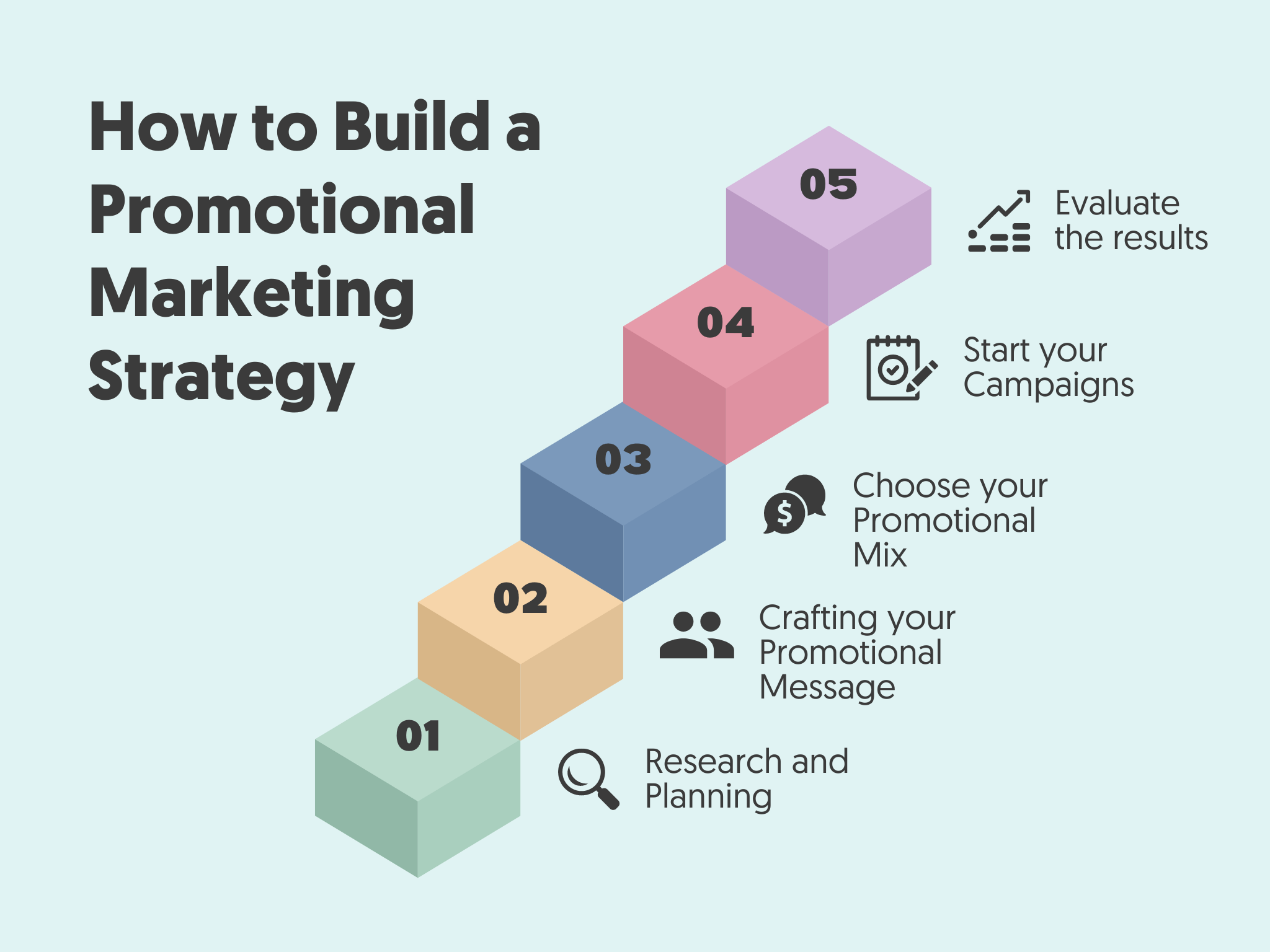
You may even choose to work with a digital marketing agency to build the perfect campaign.
Most of the time, promotional marketing strategies will include the following:
1. Research and Planning
The first step in any effective marketing campaign is research. Start by evaluating the market you’re selling in.
Explore the advertising trends of the space, the competitors in your industry, and your target audience's current preferences and expectations.
Next, dive deeper into your target niche or the exact types of customers you want to reach.
Every business has its own “ideal customer” with specific behavioral, demographic, geographic, and psychographic characteristics.
It can be helpful to develop buyer personas for each market segment you want to reach, outlining their location, buying power, needs, interests, and goals.
Once you have a clear insight into your target audience, establish your promotional goals.
For instance, is your focus currently on building brand awareness, showcasing a new product, generating excitement for a launch, or driving traffic to your website?
You can determine how much money you’ll need to invest in your campaign based on your goals.
Some marketing strategies can be more expensive than others, depending on the resources you already have.
For instance, if you have in-house writers and content creators, you may be able to develop a digital marketing strategy on a relatively low budget.
2. Crafting your Promotional Message
Next, it’s time to think about the message you want to send to your target audience based on your established goals and your understanding of your customers.
A good way to start crafting an effective message is to examine the products or services you want to promote.
What are the key benefits they offer to your target audience? Which pain points will they address, and how are these solutions different from the other options on the market?
The best marketing messages will reflect your brand, showcasing your personality and unique tone of voice in a way that strengthens your emotional connection with your target audience.
When building your ideal message, make sure it’s:
Clear and concise: Don’t overwhelm your audience with flowery language and jargon.
Focus on quickly and clearly communicating what you have to offer, drawing attention to the benefits of your solution (not just the features).
Memorable: Find a way to make your message memorable and attention-grabbing.
Concentrate on connecting with your audience in a tone they’ll understand.
A good marketing message should stick in the mind of your intended customer.
Unique: Your marketing messages should help to differentiate your business from your target audience.
Conducting competitor research before crafting your content can be an excellent way to ensure you’re sending a unique, engaging message.
3. Choose your Promotional Mix
Once you have a compelling message for your marketing campaigns, the next step is figuring out how you will share it with your target audience.
Depending on your budget and customer base, your promotional mix may focus on a single channel or multiple.
You might consider leveraging numerous digital marketing strategies if you know your target audience spends most of their time online.
Many types of digital marketing can overlap and complement each other. For instance, you can share your blog posts and other forms of content on social media and through your email marketing campaigns.
If you want to strengthen your brand’s reputation and earn trust, you might concentrate heavily on working with influencers, promoting your business through radio, newspaper, television, and magazine segments, or working with public relations experts.
If your customer base exists largely in the offline space, you could choose to focus on personal selling, direct mail, billboards, and other forms of promotion.
Generally, the most effective marketing mixes will leverage various methodologies and channels to expand brand awareness and boost your potential reach.
4. Implementing the Campaign
With your marketing mix laid out, you can start implementing your marketing strategies. The key to success here is careful planning.
Create a promotional schedule to outline exactly when and where you will share specific pieces of content. Define clear roles for each individual in your team who might be responsible for contributing to the marketing mix.
It’s also worth ensuring your employees can collaborate and work seamlessly together on promotional strategies, leveraging each other’s strengths and following critical guidelines.
Ensure you have brand guidelines in place to improve the consistency of your message and image across multiple channels.
Ensure every team member has access to information about your tone of voice, how to use your logo and visual assets, and how to leverage different types of channels.
5. Evaluating Each Campaign
Finally, the last step in effectively implementing and using promotional marketing is learning from your campaigns.
Whatever strategy you use to promote your products and brand, make sure you have tools in place to monitor crucial results.
Based on the goals you set for your campaign, you should have a basic idea of what kind of metrics and KPIs you need to monitor to determine whether the strategy was a success.
For instance, if your goal was to increase audience awareness, then you might monitor things like brand mentions, website traffic, and overall conversions.
Use the data you collect from each campaign to establish which marketing strategies are most effective for your business. This will help you to learn and improve your brand’s image the next time you work on your promotional materials.
Examples of Promotional Marketing Campaigns
Sometimes, one of the best ways to boost your chances of running an effective promotional marketing campaign is to learn from excellent examples from existing brands.
There are plenty of great sources of inspiration out there. Here are some options to learn from:
Inspire people to pursue their dreams and passions.
The best promotional marketing techniques connect with your audience on an emotional level. They’re motivational and inspirational and are designed specifically to generate action.
For instance, Nike’s “Just Do It” campaign, launched in 1988, featured inspiring messages directly taken from Nike’s consumers to help showcase the idea that anyone can be an athlete.
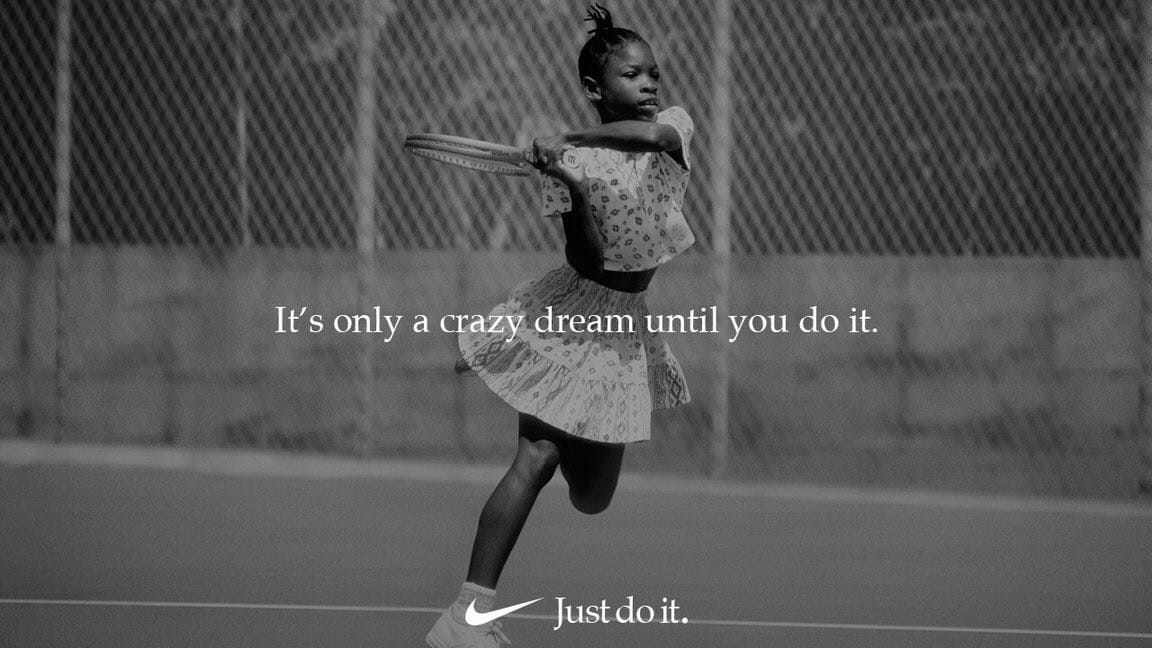
This inspirational campaign encouraged customers to pursue their dreams and aspirations while drawing attention to Nike as a champion of its customers.
Present your product's strengths.
Effective promotional marketing campaigns inform and educate your customers too.
They highlight the core features and benefits of your products and services in a way that resonates with your target audience and separates you from your competitors.
For example, the Apple “Get a Mac” campaign launched in 2006 featured a series of ads that directly compared Mac computers to Windows PCs.

Not only did this help to highlight the unique benefits of Apple computers, but it also showcased the company’s friendly and fun personality with a humorous and engaging tone.
Challenge the market with new ideas.
Challenging the status quo can be a fantastic way to ensure your company resonates with your customers.
For instance, the Dove “Real Beauty” campaign in 2004 challenged old-fashioned beauty standards, reminding us that everyone is beautiful.
These campaigns championed real customers, improving affinity between the brand and its target audience.
Conclusion
Promotional marketing is just one of the many forms of advertising companies can use to strengthen their position in their chosen market and connect with a specific audience.
The right promotional marketing campaigns don’t just draw attention to your products and services. They also help to develop emotional connections with the right buyers, inform customers, and drive sales.
Using the strategies and guidelines outlined above, you can develop a compelling promotional marketing campaign, perfect for strengthening your position in your industry.



